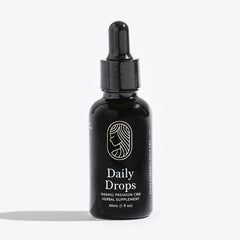You’re tired. You’re wired. You’re trying to hold it all together—but everything feels like too much. Maybe you’ve chalked it up to burnout (because honestly, who isn’t burned out right now?). But what if it’s something deeper? What if your nervous system is stuck in a state of survival?
Burnout and nervous system dysregulation often look similar—but they’re not the same. And knowing the difference isn’t just semantics. It’s how we begin to heal.
Let’s break down the difference—and explore what real support can look like for both.
What Is Burnout?
Burnout is the body and brain’s response to prolonged stress, especially when output exceeds recovery. It often shows up after months—or years—of pushing through exhaustion, caregiving without pause, or constantly managing others’ needs.
Signs of Burnout:
-
Constant fatigue, even after rest
-
Mental fog, detachment, or feeling “checked out”
-
Lack of motivation or emotional flatness
-
Feeling like you have nothing left to give
-
Irritability or cynicism, especially at work
Burnout isn’t weakness. It’s depletion. It’s your body’s way of saying: I need a break.
How to Cope with Burnout:
Burnout needs restorative withdrawal—less output, more recovery.
Try:
-
Setting boundaries that protect your energy
-
Prioritizing real rest (not just sleep, but stillness)
-
Eating consistently to support blood sugar and energy
-
Reconnecting with joy and connection—without pressure to perform

What Is Nervous System Dysregulation?
Nervous system dysregulation is a state where your body struggles to shift out of stress mode. It can stem from chronic overwhelm, trauma, or simply never having enough space to come down from high alert.
It often lives deeper in the body—and lasts longer than we think.
Signs of Dysregulation:
Feeling wired and exhausted
-
Trouble falling or staying asleep
-
Emotional reactivity (snapping, freezing, spiraling)
-
Digestive issues or unexplained tension
-
Feeling on edge, even when nothing is “wrong”
Dysregulation doesn’t always look dramatic. It can feel like never being able to fully exhale.
How to Cope with Dysregulation:
Dysregulation needs nervous system regulation—tools that help restore a sense of safety in the body.
Try:
-
Daily breathwork like 4-7-8 or box breathing
-
Grounding practices: slow walks, stretching, warm baths
-
Full-spectrum hemp: CBD and low-dose THC support the endocannabinoid system, your body’s natural stress-buffer*
-
Working with a trauma-informed therapist or somatic practitioner

Burnout vs. Dysregulation: What’s the Difference?
These two states overlap—but here’s one way to think about it:
-
Burnout feels like you’ve been doing too much, for too long.
-
Dysregulation feels like your body can’t recover—even when you stop.
You might be experiencing one. You might be navigating both. The point isn’t to diagnose—it’s to listen to your body’s signals, and respond with care.
You Deserve More Than Survival
You don’t have to earn rest. You don’t have to wait until you break. Whether you’re navigating burnout, dysregulation, or both—your nervous system is asking for care.
At Equilibria, we’re here to support the real work of regulation—not just self-care that looks good on a checklist. From CBD to low-dose THC, our routines are designed to help women feel calm, resilient, and fully in their bodies again.






